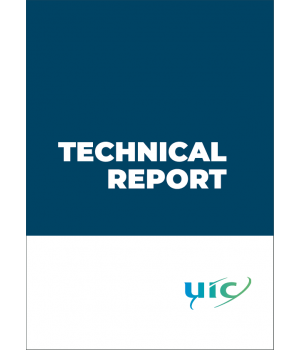
Braking Issues - Braking performance deficit on trains consisting of wagons for combined transport - Root cause analysis and countermeasures
During a major brake testing campaign conducted between 2011 and 2013, SBB found that there was a significant lack of braking performance on so-called UCT trains (Unaccompanied Combined Transport, i.e. container transporters and pocket wagons) on the transalpine axis D/F – CH – I. The present UIC project was implemented in order to ascertain the reasons for this finding.
The investigations carried out by the UIC working group B 126.24 show that the lowering of the braking performance is imputable neither to a malfunction of the load-weighing device nor to a long propagation time of the braking command in the brake pipe.
Concerning the brake rigging efficiency, many measurement data have been collected. A high var-iability in results was observed during the assessment of dynamic efficiency. As UCT wagons are equipped with various types of brake rigging designs, and as designers have used different theo-retical values for the average dynamic efficiency between two revisions, an explicit assessment on how far braking performance is compromised by low rigging efficiency could not be realised yet by the working group.
The working group therefore recommends to UIC to carry out, as part of a new project, a comple-mentary analysis focused on the impact of brake rigging efficiency on the real braked weights ob-tained in service, in comparison with the braked weights marked on the vehicles.
| ISBN | 978-2-7461-2742-5 |
| Pages | 67 |
Fiche technique
- Langage
- Anglais
- Edition
- Ed. no.1
- Date d'édition
- 01/05/2019
- Date de publication
- 18/11/2020
- Nombre de pages
- 67
- Thème
- Combined Transport Transport combiné Rolling stock Matériel Roulant
- sku
- E_B126/RP52-PDF
- Reference
- B 126 / RP 52
 Préférences sur les cookies
Préférences sur les cookies

